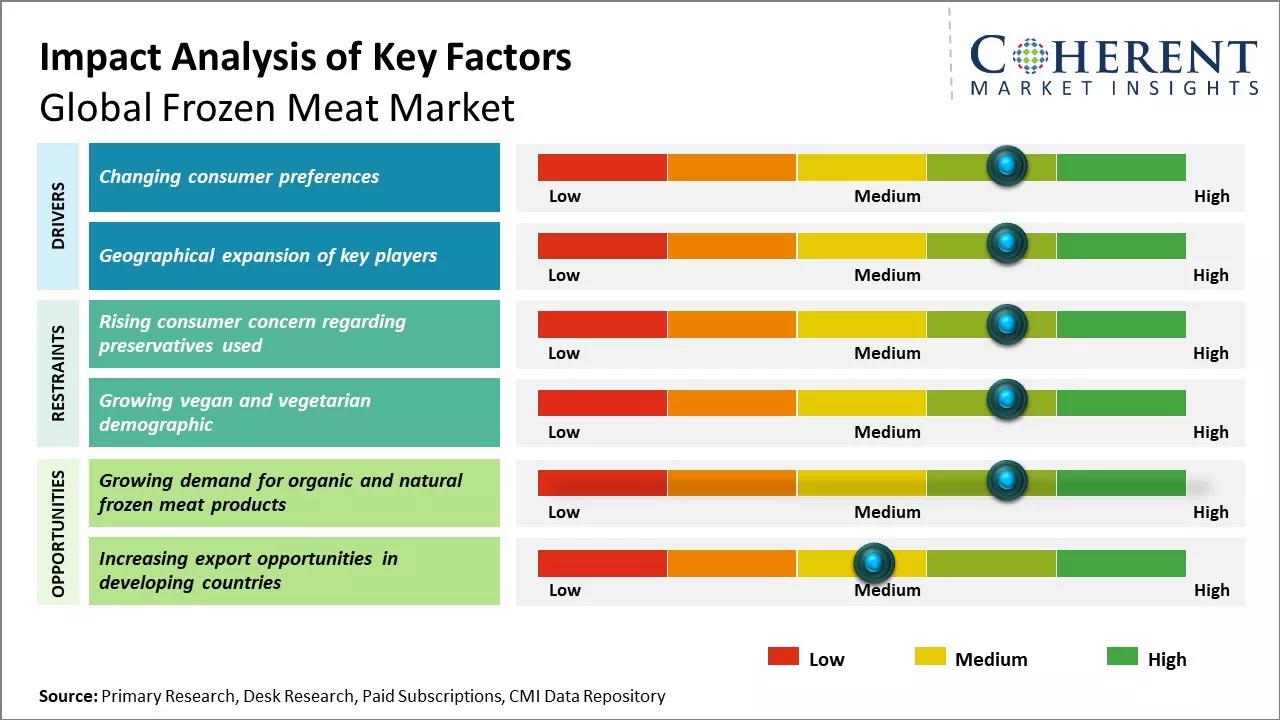The frozen meat market is estimated to be valued at USD 25.77 Bn in 2025 and is expected to reach USD 33.26 Bn by 2032, exhibiting a compound annual growth rate (CAGR) of 3.7% from 2025 to 2032.

To learn more about this report, Request sample copy
The frozen meat market is expected to grow steadily over the forecast period. The growth of the market is driven by busy lifestyles and increasing demand for convenience foods. Frozen meat offers benefits like longer shelf life and availability throughout the year. Changing dietary patterns and rise of organized retailing are further expected to support the sales of frozen meat products. Manufacturers are focusing on launching improved frozen meat products with higher nutritional value. They are also offering various package sizes to cater to the requirements of different end users. However, high setup and operational costs associated with cold chains can pose a challenge to the growth of the frozen meat market.
Changing consumer preferences
The frozen meat market has been witnessing significant growth over the past few years owing to the changing consumption patterns and hectic lifestyles of consumers. With increasing dual-income households and nuclear families emerging as a trend in major countries, people are left with very little time to prepare elaborate meals on a daily basis. Frozen meat products offer a convenient solution as they require minimal preparation and cooking time. Moreover, attributes such as long shelf life and year-round availability are driving their demand among time-strapped consumers.
Over the past decade, people have become more health and diet conscious. They are now focusing on the consumption of lean meat, low fat meat cuts, and value-added frozen meat products that are low in calories and cholesterol. This trend has prompted frozen meat manufacturers to offer a wide variety of nutritional and healthy frozen meat options. Some of the popular lean frozen meat varieties available in the market include chicken breast fillets, extra lean ground beef, and turkey bacon. The growing health awareness is encouraging the uptake of low fat frozen meat alternatives.
Joining thousands of companies around the world committed to making the Excellent Business Solutions.
View All Our Clients